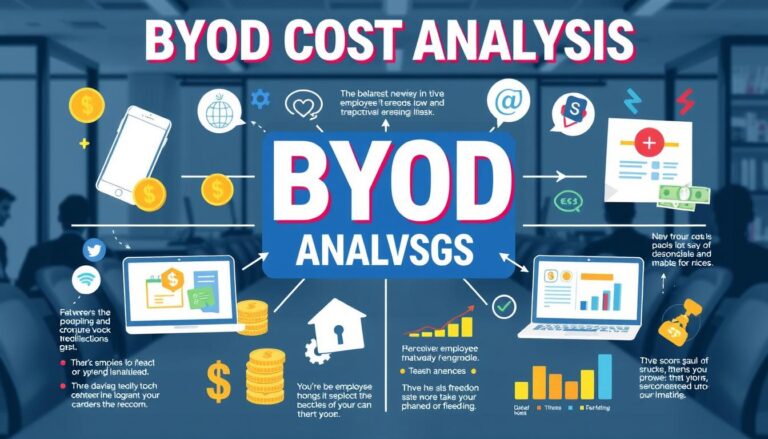Navigating 2025 Tech Trends for Business Success
Unlocking Tomorrow’s Potential: A Comprehensive Guide to 2025 Tech Trends for Business Growth
Estimated reading time: 13-14 minutes
Key Takeaways
- Explore cutting-edge 2025 tech trends, including advancements in web and mobile app development, cloud and DevOps, AI automation, and modern UI/UX design.
- Learn how businesses, from startups to enterprises, can strategically leverage these innovations for accelerated growth, improved performance, and competitive advantage.
- Discover practical insights and actionable strategies to build a future-ready tech stack, optimize operations, and achieve strategic digital transformation.
- Understand the critical role of AI in revolutionizing customer service, workflow automation, and enhancing user experiences across digital products.
- Embrace serverless architectures and robust DevOps practices for efficiency, scalability, and significant cost savings in cloud computing.
Table of Contents
- Unlocking Tomorrow’s Potential: A Comprehensive Guide to 2025 Tech Trends for Business Growth
- The Evolving Landscape of Web Development in 2025
- Mobile App Innovation: Flutter vs. React Native and Beyond
- Cloud Computing and DevOps: Driving Efficiency and Scale
- AI Automation for Businesses: Intelligent Delegation and Growth
- Modern UI/UX Design: Crafting Seamless Digital Experiences
- Digital Transformation Strategies for Growth
- Building Your Future-Ready Tech Stack in 2025
- FAQs about 2025 Tech Trends
- What are the biggest tech trends to watch out for in 2025?
- How can small businesses leverage 2025 tech trends without a huge budget?
- Is AI automation truly beneficial for all types of businesses?
- Should my business choose Flutter or React Native for mobile app development in 2025?
- What is serverless architecture, and why is it important for 2025?
- How does modern UI/UX design impact business growth?
- Conclusion: Embracing the Future with Strategic Tech Adoption
The digital landscape is in a constant state of flux, driven by relentless innovation and an ever-increasing demand for efficiency, speed, and intelligence. As we step into 2025, the pace of technological advancement shows no signs of slowing down. Businesses, developers, and tech enthusiasts alike are looking towards a future where digital solutions are not just enablers but core drivers of growth, competitive advantage, and operational excellence. This guide serves as your essential playbook, dissecting the most impactful 2025 tech trends that are poised to redefine how we build, interact with, and leverage technology.
From the foundational shifts in web development trends and mobile app development 2025 to the transformative power of cloud computing and DevOps, the pervasive influence of AI automation for businesses, and the critical role of modern UI/UX design, we will explore how these innovations coalesce to create unprecedented opportunities. We’ll delve into specific technologies like Next.js and React performance, compare Flutter vs React Native for mobile strategies, examine serverless architecture benefits, and understand the strategic imperative of digital transformation strategies.
Our mission is to break down complex technological concepts into actionable insights, providing a roadmap for enterprise digital adoption and offering tangible strategies for tech innovation for small businesses. Whether you’re aiming to optimize a Next.js small business site, understand the nuances of CI CD small team deployments, or implement AI chatbots for customer service, this article will equip you with the knowledge to make informed decisions and accelerate your journey toward a future-proof digital presence.
At AITechScope, we empower businesses to thrive in this evolving environment. Specializing in AI-powered automation, n8n workflow development, and business process optimization, we help companies harness cutting-edge AI tools to scale operations, reduce costs, and improve efficiency through intelligent delegation and automation solutions. This guide reflects our commitment to bringing you the most relevant and forward-thinking tech insights.
The Evolving Landscape of Web Development in 2025
Web development continues to be the bedrock of digital presence, but its evolution is rapid and profound. In 2025, the focus is squarely on performance, scalability, and enhanced user experiences, heavily influenced by frameworks and intelligent content delivery.
Next-Gen Frameworks and Performance
The choice of framework dictates much about a web application’s speed, scalability, and developer experience. Next.js continues its ascent as a powerhouse, especially when combined with React performance optimization techniques. For businesses seeking a competitive edge, speed is non-negotiable. Our research, including case studies, shows that optimizing page load by 60% for clients is achievable through meticulous performance tweaks.
- Next.js and React Performance Optimization: Developers are leveraging Next.js’s built-in optimizations like automatic code splitting, image optimization, and server-side rendering (SSR) or static site generation (SSG) to deliver lightning-fast applications. Combining this with 5 simple React performance fixes such as memoization, virtualization for large lists, and efficient state management can significantly reduce page load by seconds. This translates directly to better SEO, lower bounce rates, and improved user satisfaction.
- Next.js for Small Business Sites: For startups and small businesses, the appeal of Next.js is immense. It offers a robust foundation for building a fast marketing site efficiently. The promise of “Build a Fast Marketing Site in One Weekend” with Next.js for small businesses isn’t just a marketing slogan; it’s a testament to the framework’s productivity and performance benefits. It allows small teams to deploy highly performant and SEO-friendly websites without extensive backend infrastructure.
- Fast Marketing Sites with Next.js: The focus here is on rapid development and deployment of marketing-centric websites that load instantaneously, providing an optimal first impression and maximizing conversion rates. This approach is crucial for modern businesses vying for online attention.
Headless CMS and Content Delivery
The traditional monolithic CMS is giving way to more flexible, scalable alternatives. Headless CMS WordPress is a prime example of this trend, allowing content to be managed in a backend system (WordPress) but delivered via an API to any frontend, whether it’s a website, mobile app, or IoT device.
- Headless CMS WordPress: This decoupling allows for greater flexibility in frontend development, improved performance (as the frontend can be built with modern, lightweight frameworks), and a streamlined content strategy across multiple platforms. Using “WordPress without the bloat” by selecting lightweight plugins that actually help SEO becomes even more critical in a headless setup, focusing solely on content management capabilities rather than frontend rendering.
Micro Frontends: Scalability and Agility
For larger, complex applications, the microservices architecture extends its principles to the frontend with micro frontends. This architectural style involves breaking down a large frontend application into smaller, independently deployable units.
- Micro Frontends: When They Help and When They Hurt: While offering benefits like improved team autonomy, easier scaling of individual features, and tech stack flexibility, micro frontends introduce complexity in deployment and integration. Understanding practical examples helps businesses decide when this approach is beneficial, typically for large enterprises with multiple development teams and evolving needs.
AI-Powered Web Apps
The integration of artificial intelligence is no longer confined to backend operations. AI-powered web apps are becoming mainstream, offering personalized experiences, intelligent recommendations, and dynamic content generation. From sophisticated search functionalities to AI-driven analytics dashboards, AI is enhancing user engagement and operational intelligence within web applications.
Mobile App Innovation: Flutter vs. React Native and Beyond
Mobile applications remain a primary touchpoint for customers and employees alike. In 2025, the competition among cross-platform frameworks intensifies, alongside a strong drive for intuitive design and intelligent functionality.
Flutter vs. React Native in 2025
The debate between Flutter vs React Native in 2025 continues, with both frameworks offering compelling advantages for cross-platform mobile app development. The decision often hinges on specific business needs, team expertise, and long-term vision.
- Which Mobile Framework for Startups? For startups, speed to market, developer availability, and cost-efficiency are paramount. React Native benefits from a large JavaScript developer pool and extensive community support, while Flutter offers superior performance closer to native, thanks to its Dart language and compiled code. “Build a Simple Cross-Platform App with Flutter: From Idea to Play Store” demonstrates Flutter’s capability for rapid development and deployment, making it an attractive option for startups aiming for efficient product launches.
- Build a Simple Cross-Platform App with Flutter: Flutter’s expressive UI and excellent developer experience allow for building visually appealing applications with complex UIs relatively quickly. Its “hot reload” feature significantly speeds up the development cycle, a critical advantage for iterative development.
Mobile App UI Trends and Responsive Design
User interface and experience are paramount in the mobile world. Mobile app UI trends in 2025 emphasize hyper-personalization, dark mode optimization, gesture-driven navigation, and enhanced accessibility.
- Responsive UI Design and Accessibility: Beyond just adapting to different screen sizes, responsive UI design now encompasses adaptive layouts that cater to user context, preferences, and accessibility needs. Designing accessible buttons: A non-designer’s guide (Figma tips) highlights the importance of inclusive design, ensuring apps are usable by everyone, regardless of ability. This not only broadens the user base but also reflects a commitment to ethical design.
AI Integration in Mobile Apps
Just like web apps, mobile applications are increasingly leveraging AI to provide richer, more personalized experiences. From predictive text and intelligent assistants to on-device machine learning for image recognition and biometric authentication, AI is making mobile apps smarter and more intuitive. Consider the use of “Galaxy AI Tools for Photo Editing,” which, while perhaps not universally adopted, showcases the potential for embedded AI to enhance core app functionalities.
Cloud Computing and DevOps: Driving Efficiency and Scale
Cloud computing is no longer a luxury but a fundamental necessity for modern businesses. In 2025, the focus intensifies on optimizing cloud resources, fostering seamless development cycles, and building resilient, scalable infrastructures.
Serverless Architecture and Cost Efficiency
Serverless architecture represents a paradigm shift in cloud resource management, allowing developers to build and run applications without managing servers. This approach significantly impacts operational efficiency and cost.
- Serverless AWS Cost Example: Platforms like AWS Lambda exemplify how serverless functions can lead to substantial cost savings. By paying only for the compute time consumed, businesses can drastically reduce infrastructure costs, especially for applications with fluctuating traffic. “Serverless on AWS: Create a Cost-Efficient Backend That Scales Automatically” illustrates how this model provides immense scalability without provisioning or managing servers, making it ideal for unpredictable workloads.
- Serverless Backend for Startups: For startups, a serverless backend for startups is a game-changer. It enables them to deploy robust, scalable applications with minimal upfront infrastructure investment and operational overhead, allowing them to focus resources on product development and growth.
Cloud Migration Strategies
Many businesses still grapple with legacy systems. In 2025, strategic cloud migration strategy is critical, moving beyond simple lift-and-shift to re-architecting applications for cloud-native benefits.
- How to Move Your Legacy App to the Cloud Without Breaking It: This involves careful planning, phased migration, and often modernizing components rather than just rehosting. Strategies include re-platforming, re-factoring, or even a hybrid approach, ensuring business continuity while transitioning to the cloud environment.
DevOps Best Practices and CI/CD Automation
DevOps best practices are central to accelerating software delivery and improving collaboration. A cornerstone of this is CI/CD automation, which automates the build, test, and deployment phases of the software development lifecycle.
- CI/CD for Small Teams: For small teams, implementing CI/CD automation doesn’t have to be daunting. “CI/CD for Small Teams: Automated Deployments Without the Headache” highlights how tools and a streamlined approach can enable small teams to achieve continuous delivery, reducing manual errors and speeding up releases.
- GitHub Actions Deploy Tutorial: Platforms like GitHub Actions provide an accessible and powerful way to set up CI/CD pipelines. A GitHub Actions deploy tutorial can guide teams through automating deployments to various cloud environments, ensuring consistent and reliable releases.
Microservices Architecture
While covered slightly in web development with micro frontends, microservices architecture is primarily a backend strategy. It involves breaking down applications into small, independent services, each running in its own process and communicating through lightweight mechanisms. This architecture promotes agility, resilience, and independent scaling of different parts of an application.
AI Automation for Businesses: Intelligent Delegation and Growth
The breakthrough period for AI, sparked by advancements like ChatGPT’s third anniversary approaching, continues to redefine business operations. In 2025, AI automation for businesses is not just about efficiency but about strategic intelligence and competitive differentiation.
The Breakthrough Period of AI
The past few years have witnessed an unprecedented surge in AI capabilities, marked by the widespread adoption and sophistication of models like ChatGPT.
- ChatGPT’s Influence and Evolution: The third anniversary approaches for ChatGPT, which undeniably “sparked a breakthrough period for AI.” Its ability to understand and generate human-like text has revolutionized various industries, from content creation to customer service. The launch of “ChatGPT for Teachers” by OpenAI, offering free AI tools tailored for U.S. K-12 classrooms, signifies AI’s expanding role in education and its broader societal impact. These advancements highlight a critical shift: AI is becoming an accessible and powerful tool for diverse applications, not just complex research.
- Galaxy AI Tools: While not every AI tool achieves universal adoption (e.g., “Survey Says Most People Ignore Them” regarding Galaxy AI Tools for Photo Editing), the continuous development and integration of AI into everyday devices and software is undeniable. This push encourages businesses to identify pain points where even “low-effort AI features” can significantly delight users and improve processes.
AI Chatbots for Customer Service and Workflow Automation
Chatbot automation has matured significantly, moving beyond simple rule-based systems to sophisticated AI-powered conversational agents.
- AI Chatbots for Customer Service: These intelligent bots can handle complex queries, provide personalized support, and even complete transactions, freeing human agents for more complex issues. How small businesses use chatbots to save time: Real workflows that work demonstrates practical applications, from answering FAQs to qualifying leads and providing instant support 24/7.
- Workflow Automation Tools: AI’s role extends to broader workflow automation tools. Companies are leveraging AI to automate repetitive tasks, analyze data for intelligent decision-making, and orchestrate complex business processes. For instance, automating repetitive tasks with no-code tools + AI (save 5-10 hours/week) is a tangible benefit for businesses of all sizes, leading to significant productivity gains.
Low-Effort AI Features for SaaS Products
Making your SaaS product optimization smarter with AI doesn’t always require massive investment. “Make Your SaaS Smarter: 3 Low-Effort AI Features That Delight Users” suggests focusing on features like intelligent search, personalized recommendations, and automated summaries that can significantly enhance user experience without extensive development.
AI-Powered Business Process Optimization
This is where AITechScope shines. We specialize in leveraging AI-powered automation, including n8n workflow development, to optimize business processes. By intelligently delegating repetitive tasks and orchestrating complex workflows, we help businesses scale operations, reduce costs, and improve efficiency. This digital innovation for startups and established enterprises alike ensures they remain competitive by harnessing the full potential of AI.
Modern UI/UX Design: Crafting Seamless Digital Experiences
User Interface (UI) and User Experience (UX) design are no longer afterthoughts but strategic imperatives. In 2025, the focus is on creating intuitive, delightful, and accessible experiences that drive engagement and satisfaction.
Responsive UI Design and Accessibility
Good design is inclusive design. Responsive UI design ensures that digital products adapt seamlessly across devices, but true modern design goes further, prioritizing accessibility.
- Designing Accessible Buttons: As highlighted by “Designing Accessible Buttons: A Non-Designer’s Guide (Figma Tips),” even seemingly small elements can significantly impact accessibility. Considerations like sufficient contrast, clear focus states, and proper semantic HTML are crucial for ensuring that digital products are usable by individuals with diverse abilities. This contributes to better overall user experience and broader market reach.
User-Centric Design Principles
The core of modern UI/UX design is a deep understanding of the user. This involves extensive user research, usability testing, and iterative design processes. Every design decision, from information architecture to micro-interactions, is guided by user needs and behaviors.
Personalization and AI in UI/UX
AI is increasingly playing a role in creating highly personalized user experiences. From dynamic content layouts based on user history to AI-driven recommendations and adaptive interfaces, AI helps tailor the digital environment to individual preferences, enhancing relevance and engagement. This also contributes to better SaaS product optimization by making the product feel more intelligent and attuned to the user.
Digital Transformation Strategies for Growth
Digital transformation strategies are essential for businesses looking to remain competitive and relevant in 2025. This involves more than just adopting new technologies; it’s a fundamental shift in culture, operations, and customer engagement.
Enterprise Digital Adoption
For large organizations, enterprise digital adoption requires a holistic approach, addressing legacy systems, cultural resistance, and integrating disparate technologies. This often involves migrating to cloud-native platforms, implementing comprehensive DevOps practices, and embracing AI-driven automation across departments.
Digital Transformation on a Budget for Small Businesses
Digital transformation isn’t exclusive to large enterprises. “Digital Transformation on a Budget: 7 Steps Small Companies Can Start Today” provides a practical roadmap. This includes leveraging affordable cloud solutions, adopting no-code/low-code platforms, and strategically implementing AI for specific pain points rather than a full-scale overhaul. Tech innovation for small businesses is about smart, targeted investments that yield significant returns.
Tech Innovation for Small Businesses
Small businesses can leverage a myriad of tech innovation for small businesses to punch above their weight. This includes implementing efficient CI CD small team pipelines, deploying Next.js small business site for superior performance, and utilizing AI chatbots for customer service to provide round-the-clock support. The goal is to maximize efficiency and customer reach with limited resources.
SaaS Product Optimization
For companies developing SaaS products, continuous SaaS product optimization is key. This involves not only performance enhancements but also integrating new features based on market trends, user feedback, and leveraging AI to make the product smarter and more intuitive. This ensures the product remains competitive and provides ongoing value to its users.
Performance Optimization Techniques
Across all digital products, performance optimization techniques are critical. This includes everything from frontend optimizations (like code splitting, lazy loading, image optimization) to backend efficiency (database indexing, caching, efficient API design) and infrastructure improvements (CDN usage, serverless scaling). Real-world case studies confirm that significant performance gains, such as cutting page load by 60%, are directly linked to these efforts.
Building Your Future-Ready Tech Stack in 2025
Navigating the multitude of software development 2025 trends requires a strategic approach to building your tech stack. It’s about choosing technologies that align with your business goals, team capabilities, and future scalability needs.
Key Considerations for 2025
When evaluating your tech stack for modern businesses, consider:
- Scalability: Can your chosen technologies handle growth in users and data? Serverless and microservices architectures are key here.
- Performance: Does your stack enable fast, responsive applications? Next.js, React, and efficient mobile frameworks are crucial.
- Developer Experience: Will your team be productive and engaged with the chosen tools? This impacts hiring and retention.
- Cost Efficiency: Are you optimizing cloud spend with serverless or efficient DevOps practices?
- AI Readiness: Can your stack easily integrate AI capabilities for automation, personalization, and intelligence?
- Security & Compliance: Are your chosen tools and practices robust enough to protect data and meet regulatory requirements?
AITechScope’s Role in Implementation
At AITechScope, we serve as your strategic partner in this journey. We help businesses not only identify the right tech stack for modern businesses but also implement it effectively. Our expertise in AI-powered automation, n8n workflow development, and business process optimization allows us to tailor solutions that leverage these 2025 tech trends to achieve tangible results: scaling operations, reducing costs, and improving efficiency through intelligent delegation and automation. We bridge the gap between cutting-edge technology and real-world business value, empowering you to embrace the future with confidence.
FAQs about 2025 Tech Trends
What are the biggest tech trends to watch out for in 2025?
The biggest tech trends for 2025 include advanced AI automation across all sectors, the continued dominance and evolution of cloud computing (especially serverless), highly performant web development with frameworks like Next.js, sophisticated cross-platform mobile app development (Flutter vs React Native), and a renewed focus on modern, accessible UI/UX design. Digital transformation strategies will integrate these elements for holistic growth.
How can small businesses leverage 2025 tech trends without a huge budget?
Small businesses can start with targeted digital transformation on a budget. This involves adopting cost-efficient serverless backend for startups, building fast marketing sites with Next.js, utilizing AI chatbots for customer service to automate support, and implementing CI/CD for small teams using tools like GitHub Actions for efficient deployments. Focus on high-impact, low-cost solutions first.
Is AI automation truly beneficial for all types of businesses?
Yes, AI automation offers benefits for nearly all types of businesses. From automating repetitive tasks to providing intelligent customer service, optimizing marketing campaigns, and enhancing data analysis, AI can scale operations, reduce costs, and improve efficiency. Even low-effort AI features can significantly delight users and streamline internal processes, as shown by the breakthrough period for AI.
Should my business choose Flutter or React Native for mobile app development in 2025?
The choice between Flutter vs React Native in 2025 depends on your specific needs. React Native benefits from a large JavaScript developer community and ecosystem, while Flutter offers superior performance and a highly expressive UI with its Dart language. For startups, both offer rapid development of cross-platform apps, but evaluating your team’s existing skill set and desired app complexity is key.
What is serverless architecture, and why is it important for 2025?
Serverless architecture allows developers to build and run applications without provisioning or managing servers. It’s important for 2025 because it offers unparalleled scalability, reduced operational overhead, and significant cost savings (pay-as-you-go model, like a serverless AWS cost example). This enables businesses to focus on code rather than infrastructure, fostering agility and innovation.
How does modern UI/UX design impact business growth?
Modern UI/UX design directly impacts business growth by improving user satisfaction, reducing churn, increasing conversion rates, and enhancing brand loyalty. Intuitive, responsive UI design with a focus on accessibility ensures a broad audience can effectively use your digital products. A positive user experience leads to higher engagement and better business outcomes.
Conclusion: Embracing the Future with Strategic Tech Adoption
The year 2025 presents an exciting yet challenging landscape for businesses. The relentless pace of tech innovation demands a proactive and strategic approach. From the dynamic shifts in web development trends and the agility required in mobile app development 2025 to the foundational efficiency offered by cloud computing and DevOps, and the transformative power of AI automation for businesses, every aspect of the digital world is evolving.
Embracing these 2025 tech trends is not merely about adopting new tools; it’s about fostering a culture of continuous learning, strategic investment, and intelligent adaptation. Whether you’re a startup leveraging Next.js for small businesses to create a fast marketing site, an enterprise undergoing digital transformation strategies, or a developer deciding between Flutter vs React Native for your next app, the underlying principle remains the same: leverage technology to accelerate growth, improve performance, and deliver unparalleled value.
AITechScope stands ready to guide you through this complex terrain. With our expertise in AI-powered automation, n8n workflow development, and business process optimization, we empower organizations to harness these cutting-edge technologies. We help you move beyond just knowing the trends to actually implementing intelligent delegation and automation solutions that reduce costs, scale operations, and drive real, measurable efficiency.
The future is bright for those willing to innovate. By understanding and strategically adopting the 2025 tech trends outlined in this playbook, businesses can confidently build a future-ready tech stack, optimize their operations, and truly unlock tomorrow’s potential. The digital world is calling – are you ready to answer?







